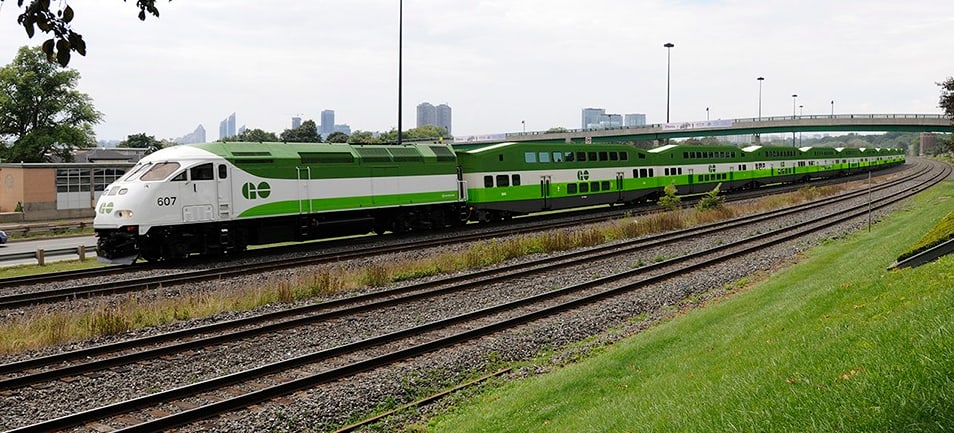What the heck is a jump frog? A simple yet effective rail device
Metrolinx News explains how GO Trains can easily switch from one track to another.
Aug 25, 2020
Each industry has its own nuances and terminology.
Did you know that ‘pitch’ – away from controlling an airplane – is used in the airline industry to describe the legroom between passengers seats?
And that a ‘riffle’ is a term used by fishermen to talk about how a current rolls over a rocky bar, before slowing down.
Metrolinx News has highlighted some unusual rail terms in the past, including in this test of your knowledge.
So, what exactly is a ‘frog’ and why is this particular one at Clarkson GO Station so special?
Image of a jump frog, which is a piece of track infrastructure. (Metrolinx photo)
A standard railroad frog is a mechanical structure that enables train wheels to cross from one track onto another. These frogs experience regular wear-and-tear as trains use them to switch tracks. They require frequent maintenance in high traffic rail corridors like Lakeshore West.
A frog is commonly used on rail corridors to divert a train from one track to another when the track being used at that time has high traffic. This operational procedure allows busiest train routes to have continuous and smooth service. The train is diverted to an alternate track, called a diverging route, by the frog and this slows down the train. While the train is switching from one track to another, or just going over a turnout (switch), it produces a loud noise and vibration.
The Lakeshore West line is one of the busiest corridors in GO Transit network drawing over 3.9-million riders each year. Since 2015, service increases on the Lakeshore West line have affected communities residing close to the tracks.
Members from the Clarkson community, in particular, have voiced their concerns about noise from the rail corridor. Metrolinx is working closely with local communities to mitigate impacts from noise and vibration, whenever possible. In this case, experts conducted a number of studies, which revealed amplified noise and vibration levels in the Clarkson area, from a track switch for an industrial customer.
Train signals and switches are a big part of how trains move safety (Metrolinx photo).
As this turnout is low use in the diverging route, but has very high frequency of GO service over the straight route, Metrolinx’s rail team started looking at innovative solutions to reduce the noise and even looked for alternative for this turnout. They found that traditional solutions of using noise walls or ballast mats would not work in this case and there were no real comparable mechanical devices that met their needs to reduce noise.
Through the studies, it was identified that there are mechanical solutions through the use of a specialised flange bearing frog – called a ‘jump frog’ – used for small sized turnouts. However these did not exist for the larger turnouts used in the heavy rail industry. They started working closely with a North American vendor that specialized in railroad technology to develop a custom jump frog for this track.
After months of design work and testing, the first North American-produced jump frog for this size of turnout will be installed at a switch by Clarkson GO station this fall.
Metrolinx officials will monitor how the device fares in its functionality and maintenance, but the overall noise and vibration should significantly decrease from the installation of this very helpful frog
If successful, there are plans to install more of these jump frogs along rail corridors at low use industrial tracks.
So while you may not have heard the term before, a jump frog may help a lot of people sleep better at night.
by Madeha Khalid Metrolinx manager of Community Engagement – Rapid Transit
